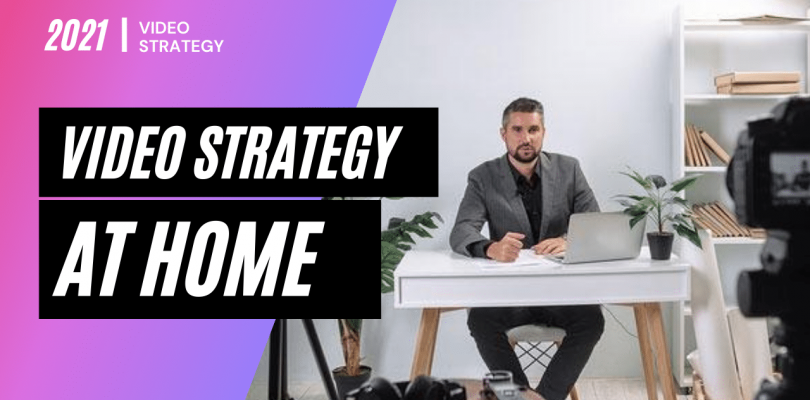Somehow 2020 ended quicker than it started, yet it seemed long and drawn out at the same time. I wonder why that was? All things considered, 2020 was a breakout year for online video. Instant demand for online video spiked through the roof, spawned from the global pandemic, priming the pumps for a huge growth year in 2021.
I think it’s safe to say that Zoom was the online video hero of 2020. With 2021 upon us, who will lead the charge in 2021? With industry giants like Vimeo raising a $150 million dollars in funding, the video software industry is posed for a massive year.
With that said, we’re kicking off the year with a list of 5 resources for video marketers looking to operate their video marketing campaigns and strategies from home. Look at these resources as an educational kit covering video production, distribution, and measurement.
1. Building your home studio

To be truly successful with video content creation in 2021 you need to have the right home video studio. The studio doesn’t need to be over complex, but it does need to be setup to capture video in the nature that you will be doing it. To consider you studio setup needs, determine what types of video you will be creating (i.e. on camera talent vs voice over) and that will dictate your setup. Watch this video to learn more.
2. Lighting your home studio

Once you have your studio setup with backdrop, the next important element to consider is lighting. If you plan on creating videos where you are the on camera talent, then lighting is extremely important. Consider light both your studio/set and also you, or the on camera talent. If you plan on attending and collaborating with others over video meetings, your home studio and lighting setup can serve a dual purpose, for both your professional content and as a backdrop for your collaborative calls. Watch this video to learn more.
3. Picking the best camera gear

Now that you have your studio and lighting setup configured, its now time to get your camera gear squared. Again, the type of video you will be creating regularly will dictate the type of camera you need. If most fo your videos do not require on camera talent, for example, then you should consider a simple camera such as a high end web cam. Alternatively, if you do plan to be on camera, decide your quality level, are you planning on ultra high clarity video or average/standard HD video. Considering all of these factors will tell you what type of hardware you need. Watch this video to learn more.
4. Using the latest video editing technology

Once the camera starts rolling and you are capturing footage, you need somewhere to dump that content and then eventually clip and edit the content into cohesive, branded video content you’ll use for your video marketing campaigns. Whether you are producing long form video, or short clips for social media, there are a number of video editing software tools that are affordable, yet powerful and perfect for basic editing. Of course, if we could make a recommendation our selves, we would say iMovie of Final Cut Pro are the easiest. But, with today’s world of mobility and the need for more with less, cloud-based video apps are the go-to, and the the future of video editing. Check out these video editing software solutions.
5. Driving viewership and engagement with distribution

Once your video has exited the editing bay and is ready for prime time, you’ll want to get it in front of the eye balls you are trying to reach. To do this you need to consider a number of distribution channels such as: video on your website, various social media channels, email, or connected TV. If you are working with live video, then picking a streaming platform and sticking with consistently is important for building and growing a loyal, captive audience. Consider these video distribution software solutions for getting your videos out there.
To get more resources on video marketing visit our video library or search hundreds of video software tools in our directory.

